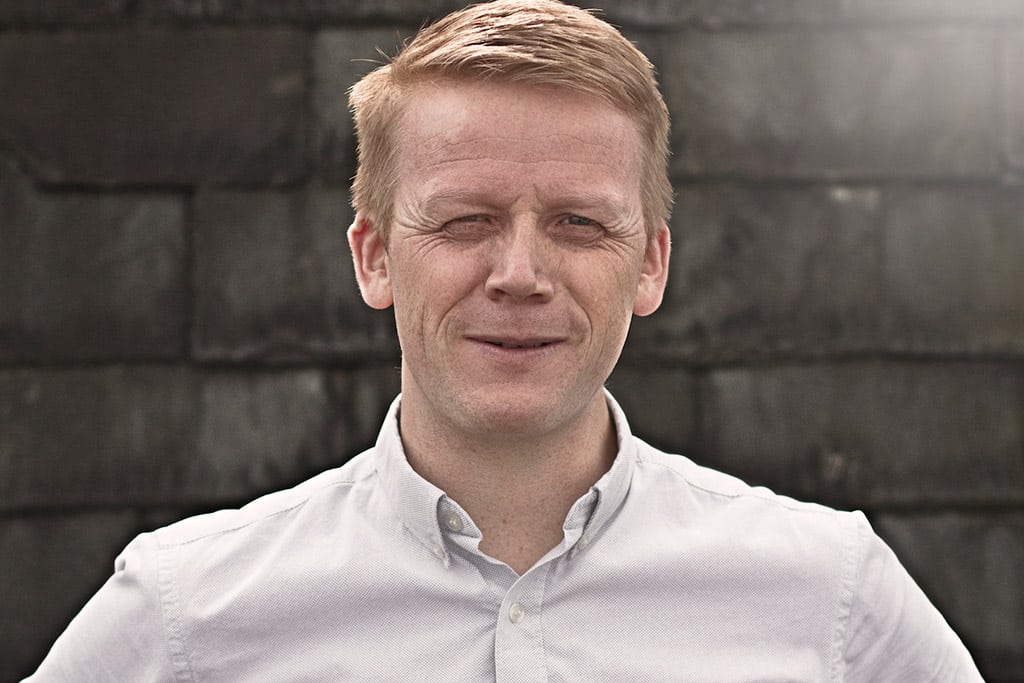Skift Take
"Designs can become icons of a brand and say a lot about what that brand stands for...Good design that takes comfort into consideration can endure for a very long time." We really can't put it better than that.
If you travel, you’ve probably already enjoyed the eclectic and enduring touch of JPADesign without even knowing it.
The London-based design firm is responsible for the interior design of trains, planes, hotels, and airport lounges around the world, including: Singapore Airlines’ exquisite First and Business Class; the vintage rail jewel of the Eastern Oriental Express; the opulent Taj Mahal Palace, Mumbai; and the modern-classic Gulf Air Premium Class Lounge at London Heathrow.
Ben Orson, Managing Director of JPADesign will speak at the Skift Global Forum about the future of the aircraft cabin: the ideals of design which endure, and what innovations the future has in store. He shares his vision of crafting the ideal cabin experience.
The Skift Global Forum is sold out.
Sign up for Alerts About Future Events and Daily News
Skift: How would you describe the ideal aircraft cabin?
Orson: I suppose the primary quality of the ideal aircraft cabin is that it needs to be a desirable space for passengers; it should enable them to leave the aircraft feeling as good as, or better than when they boarded. It must also be aligned with and express the airline’s brand. Most importantly, it must be comfortable. The cabin experience is the big thing you pay for—it’s the main event—it must be memorable and those memories need to be good ones.
Skift: To what extent does a class divide still apply to today’s and tomorrow’s flying experience?
Orson: Classes of travel remain a defining characteristic of air travel but thankfully now the structures are less rigid and there’s a lot more imagination applied than there used to be. The types of product categorised as Business Class vary enormously, for example. Innovation in design and marketing has created all sorts of variants within the cabin, from ‘Residences’ to First Class Suites to Business First, to Business Economy, Premium Economy—all manner of interpretations of these.
Skift: What challenges do designers face when inspiring airlines to take risks?
Orson: The objective for us initially is create a shared vision with our customers of what we can hope to achieve in the cabin that all of the stakeholders can get behind and believe in. To accomplish this, it’s vital to listen to the customer and to build on their aspirations. If you have a vision that is strong and credible that is shared between the airline, the manufacturers and the designer then that’s when you can make great leaps forwards.
Skift: We get a new iPhone every year, but it can take five years for a new aircraft to go from the drawing board to the skies. How can airlines stay relevant in today’s rapid-change market, when the lead times for design programs are so long?
Orson: Well, consumer electronics may have a short design life cycle, but we need to look at the objectives of design in the larger scope of what it should accomplish. Designs can become icons of a brand and say a lot about what that brand stands for.
The classic example is the Porsche 911, which can trace it’s essence back for decades because it’s fundamentally a very well resolved design. That’s something we can accomplish in aviation. As an example, when we developed the Singapore Airlines Business Class – launched in 2006–we were able to create something enduring which would look and feel special for many years, and has a value that remains relevant and can be built upon.
When you create products like that for aircraft interiors, it may be expensive up front, because you have to break a lot of new ground, but it repays it’s investment for many years. Our First Class seat for the Singapore’s 747, for example, was in service for well over a decade, but remained very popular with passengers.
Good design that takes comfort into consideration can endure for a very long time. It absolutely isn’t about looking for novelty alone, but about understanding and responding better to people’s needs. There have been some very exciting developments entering the market, and the best designed will see long service. Sometimes it comes down to a decision for the airline, do they want to make little changes often or bigger, smarter changes that will be attracting customers for years.
Skift: What features of the cabin of tomorrow might surprise us?
Orson: As an industry, we are only beginning to appreciate the impact of the connected cabin. Connectivity opens up a number of new areas of exploration which we’ll begin to see having an effect in the short-term future. It will help to develop entirely new functionalities.
It’s very interesting to see the dynamics developing between the big embedded IFE suppliers, the many new entrants to the field and the passengers who bring their own devices to the situation and expect the types of seamless experience we are used to on the ground. Cabin architecture will continue to be a key differentiation battleground and new technology will bring a series of step changes to the cabin experience.
People love new and exciting experiences; they love being rewarded by airlines for their loyalty with new and unique cabin environments. Airlines and the design community must respond to this and continue to push for improvements. It’s a demanding industry for creative companies but for those of us who make design our lives, who love getting into these projects and finding those solutions, it’s a very exciting place to be.
The Daily Newsletter
Our daily coverage of the global travel industry. Written by editors and analysts from across Skift’s brands.
Have a confidential tip for Skift? Get in touch
Tags: sgf2014, skift global forum
Photo credit: Designer Ben Orson. JPA Design
